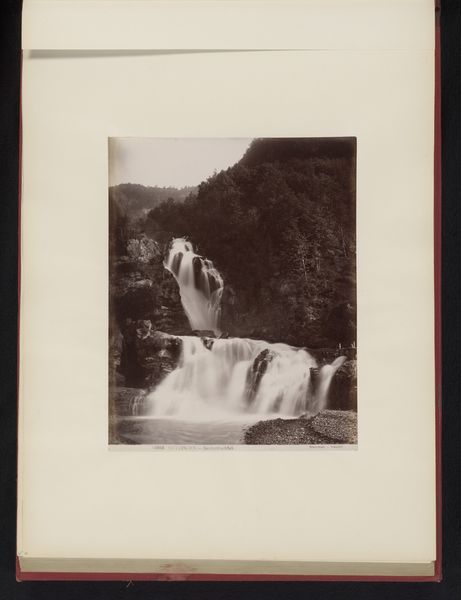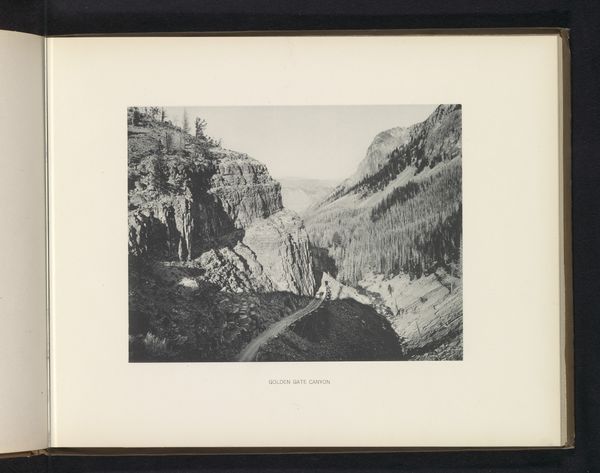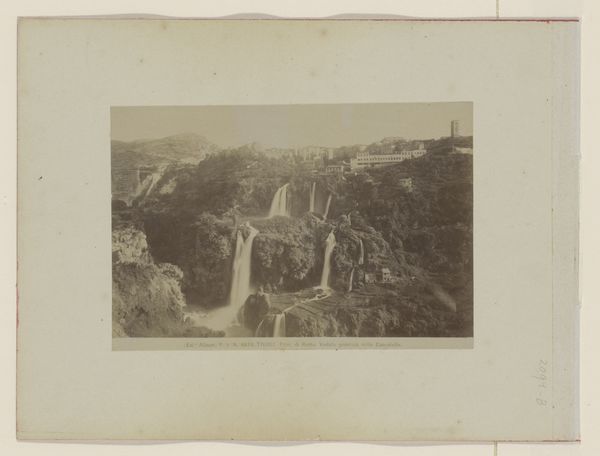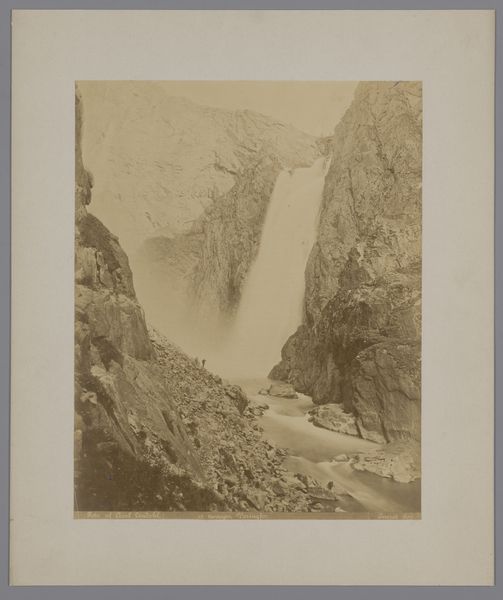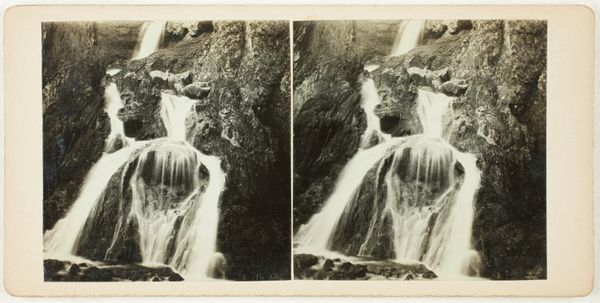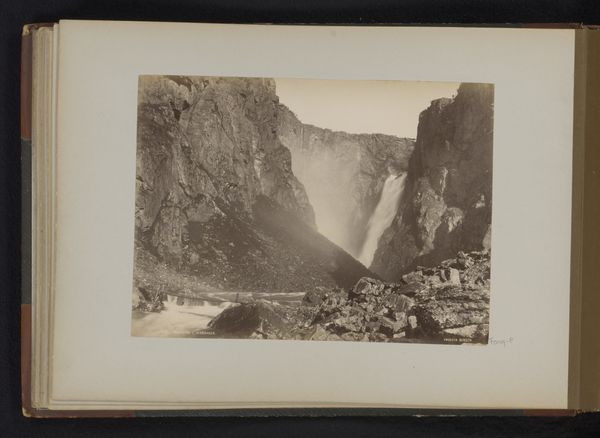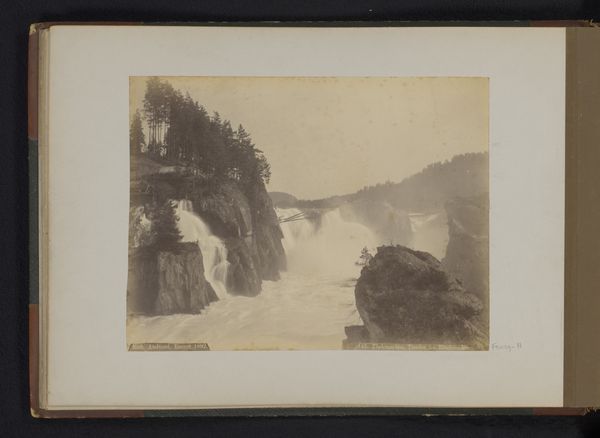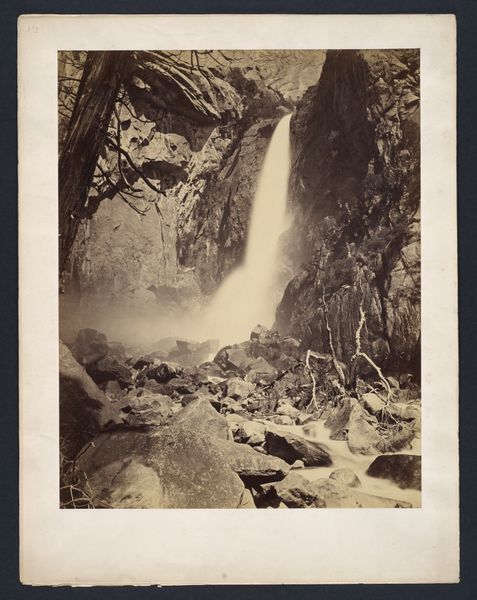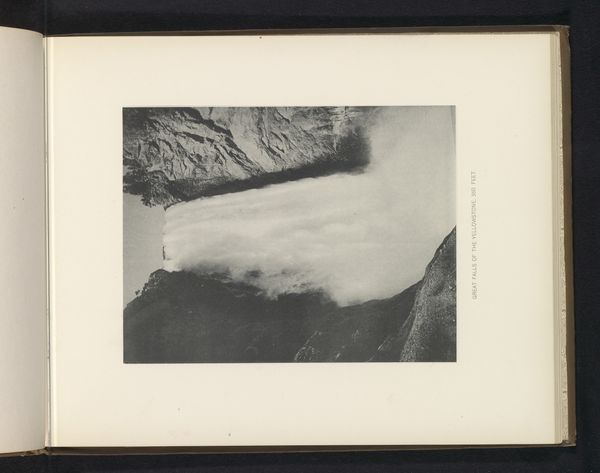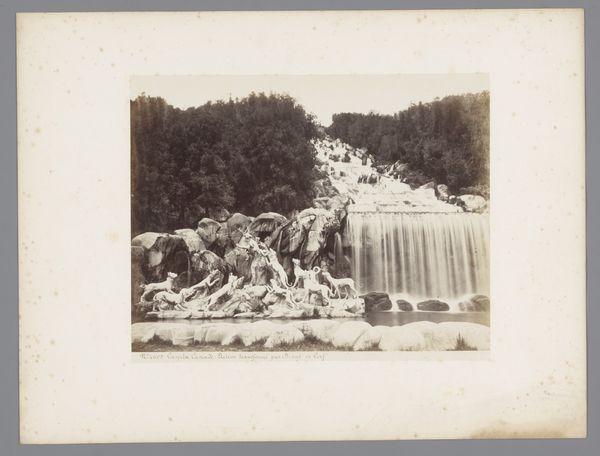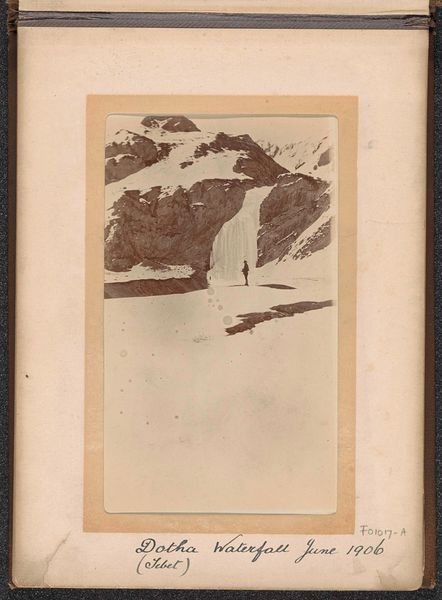
photography, gelatin-silver-print
#
pictorialism
#
landscape
#
river
#
photography
#
gelatin-silver-print
Dimensions: height 165 mm, width 216 mm
Copyright: Rijks Museum: Open Domain
Curator: It's got this real dreamy quality. Sort of washes over you like the falls themselves. Is that just me? Editor: It’s the pictorialist style. Frank Jay Haynes captured "Gibbon Falls" before 1891 using the gelatin-silver print process. That explains the softness. Haynes aimed to make photography appear more artistic. He saw photography as being on par with painting. Curator: He definitely nailed that ethereal, painted-like effect. Like Turner's landscapes, almost dissolving at the edges, all movement and light. Editor: Exactly! Pictorialism was in part a rejection of photography being perceived purely as documentation, it was artists who began to consider the relationship of humans and their surrounding enviroments. So we could see Haynes responding to turn of the century issues through his representation of landscape. Curator: Hmm, thinking about the industrial revolution, urban expansion, he wanted an escape. The falls were perhaps a balm. I can feel it even looking at it now, you know? A place to just...breathe. Editor: And it invites contemplation. The very framing, the silvery tones evoke serenity, but what might it obscure, particularly thinking of this period of aggressive westward expansion in the U.S. Curator: That’s a sobering thought. Are we idealizing an era through such images? Romanticizing an unblemished American landscape that never truly was? Editor: Precisely! Haynes and his contemporaries were crafting a very specific vision, so thinking about the cultural, the ecological costs can give us a much richer view of these scenes. Curator: So, what feels like an instant transport to a quieter space also prompts me to ponder deeper questions. What is being recorded and simultaneously, what isn't. Editor: Yes! Even within its beauty, the photograph presents complexities for viewers like ourselves, over a century later. That constant dialogue between then and now shapes how we perceive "Gibbon Falls". Curator: The falls might look different but those underlying conversations hopefully linger on. Editor: Hopefully the dialogue around the landscapes continues, and grows!
Comments
No comments
Be the first to comment and join the conversation on the ultimate creative platform.
